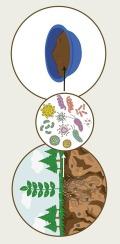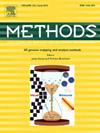一种以土壤和植物为基础、具有微生物和免疫调节作用的天然材料的生产、分析和安全评估。
IF 4.3
3区 生物学
Q1 BIOCHEMICAL RESEARCH METHODS
引用次数: 0
摘要
有人认为,在西方高度城市化的社会中,与自然环境中的微生物群接触减少是导致免疫介导的炎症性疾病(IMIDs)发病率上升的原因之一。有鉴于此,我们以前的研究表明,接触由土壤和植物材料组成的混合物形式的环境微生物群(生物多样性混合物;BDB)可提高人类共生微生物群的多样性并促进免疫调节,这可能与降低 IMIDs 的风险有关。为了给未来的临床前研究和临床试验提供一个框架,本研究介绍了如何标准化制备 BDB、分析其微生物含量以及进行安全性评估。我们生产了多个批次的 BDB,并使用 16S rRNA 基因测序分析了微生物成分。我们观察到,通常存在于土壤和植被中的细菌始终具有较高的α多样性和相对丰度。我们还发现,用高压灭菌法灭活 BDB 能有效地灭活人类和鼠类细菌、病毒和寄生虫。最后,我们证明,易患 IMIDs 的实验小鼠(非肥胖糖尿病小鼠模型)可以接触 BDB,而不会对动物健康和福利造成不良影响。我们的研究提供了一种潜在的安全、可持续和具有成本效益的方法,用于模拟自然微生物群的暴露,这可能会对健康和社会经济因素产生重大影响。本文章由计算机程序翻译,如有差异,请以英文原文为准。

Production, analysis, and safety assessment of a soil and plant-based natural material with microbiome- and immune-modulatory effects
It has been suggested that reduced contact with microbiota from the natural environment contributes to the rising incidence of immune-mediated inflammatory disorders (IMIDs) in western, highly urbanized societies. In line with this, we have previously shown that exposure to environmental microbiota in the form of a blend comprising of soil and plant-based material (biodiversity blend; BDB) enhances the diversity of human commensal microbiota and promotes immunoregulation that may be associated with a reduced risk for IMIDs. To provide a framework for future preclinical studies and clinical trials, this study describes how the preparation of BDB was standardized, its microbial content analysed and safety assessments performed. Multiple batches of BDB were manufactured and microbial composition analysed using 16S rRNA gene sequencing. We observed a consistently high alpha diversity and relative abundance of bacteria normally found in soil and vegetation. We also found that inactivation of BDB by autoclaving effectively inactivates human and murine bacteria, viruses and parasites. Finally, we demonstrate that experimental mice prone to develop IMIDs (non-obese diabetic, NOD, mouse model) can be exposed to BDB without causing adverse effects on animal health and welfare. Our study provides insights into a potentially safe, sustainable, and cost-effective approach for simulating exposure to natural microbiota, which could have substantial impacts on health and socio-economic factors.
求助全文
通过发布文献求助,成功后即可免费获取论文全文。
去求助
来源期刊

Methods
生物-生化研究方法
CiteScore
9.80
自引率
2.10%
发文量
222
审稿时长
11.3 weeks
期刊介绍:
Methods focuses on rapidly developing techniques in the experimental biological and medical sciences.
Each topical issue, organized by a guest editor who is an expert in the area covered, consists solely of invited quality articles by specialist authors, many of them reviews. Issues are devoted to specific technical approaches with emphasis on clear detailed descriptions of protocols that allow them to be reproduced easily. The background information provided enables researchers to understand the principles underlying the methods; other helpful sections include comparisons of alternative methods giving the advantages and disadvantages of particular methods, guidance on avoiding potential pitfalls, and suggestions for troubleshooting.
 求助内容:
求助内容: 应助结果提醒方式:
应助结果提醒方式:


